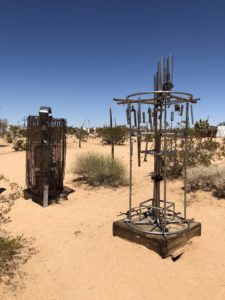September 4th, 2018
Over the long weekend, during a game of Trivial Pursuit (Masters Edition) with friends, someone mentioned Karl Ove Knausgaard’s latest tome The End and another person suggested that he might suffer from a condition known as hypergraphia–an uncontrollable compulsion to write.
We often think compulsion lessens the value of expression or the authenticity of an artwork. Words used to describe something done compulsively tend to have negative connotations. If the art or the action or the decision isn’t the result of informed intellectual thought and planning, then we consider it more naive or careless or rash.
To me, there can be so much beauty in visual art that results from compulsion. The artists’ vulnerability, despair and hope accumulate outside their bodies. In Palm Desert, I visited the Noah Purifoy Outdoor Sculpture Museum, ten acres of assemblages Purifoy created entirely from discarded materials. I stepped onto the grounds and felt the physical pull of each singular piece and was very moved. It’s a project he worked on for fifteen years, though some mark the 1965 Watt’s Rebellion as the true start, because after the violence was over, Purifoy started making sculptures from the debris and never really stopped.


